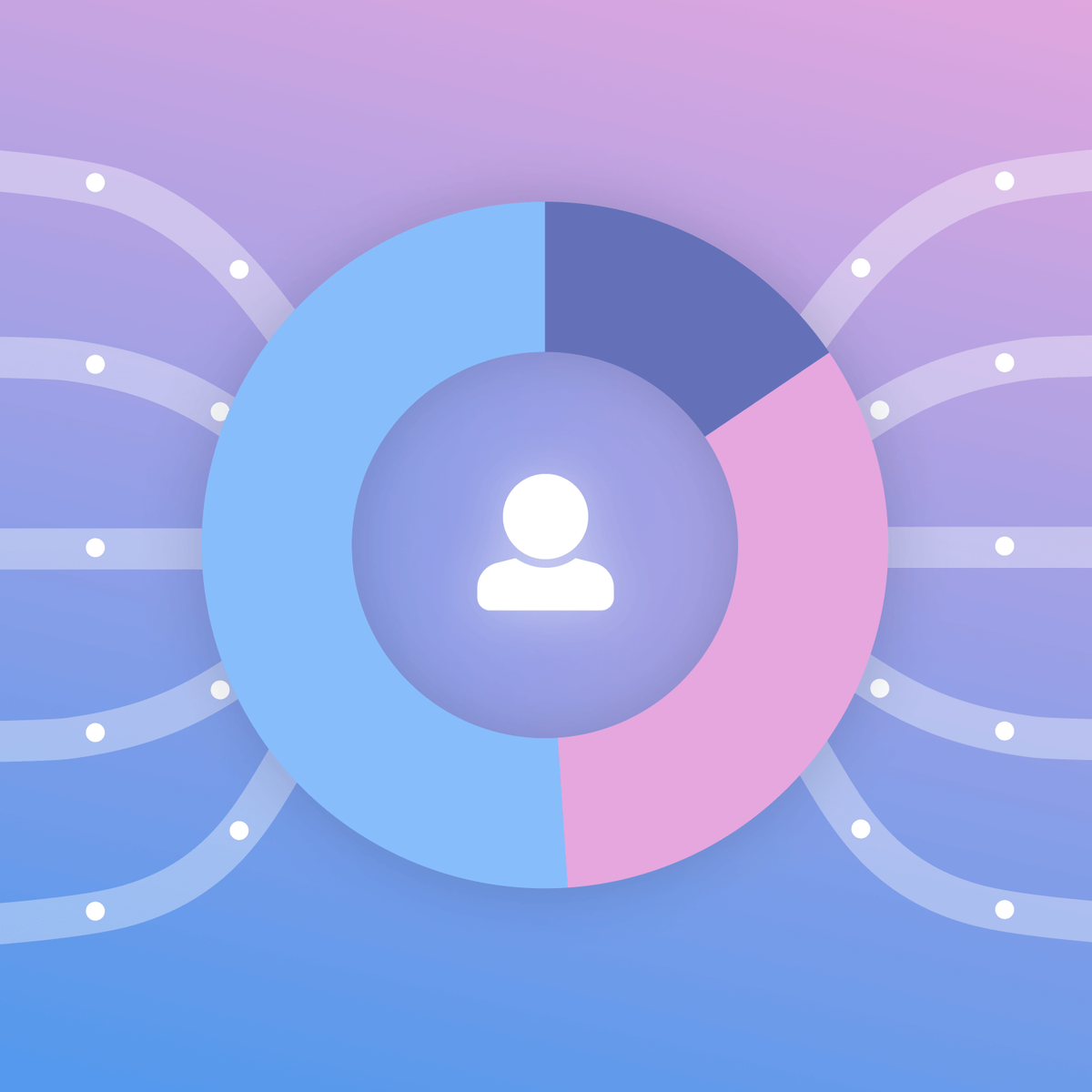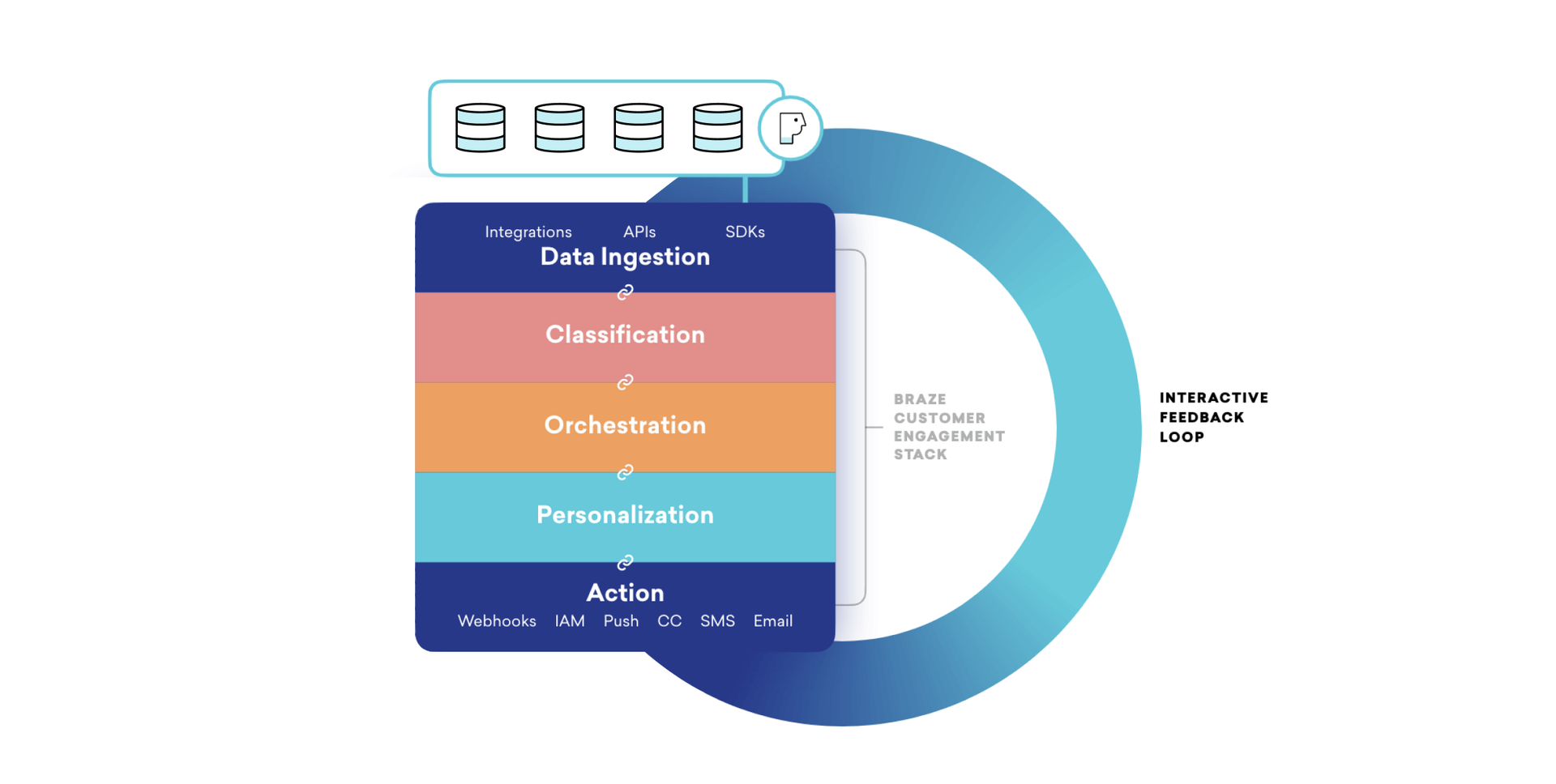Embracing Accurate Segmentation to Drive Real-Time Connected Communications and Higher ROI
Published on March 31, 2023/Last edited on March 31, 2023/8 min read


Team Braze
Building relationships with customers in today’s landscape can feel like driving a Formula 1 race, where marketers must navigate a dizzying array of data sources, channels, technologies, and touchpoints to reach the checkered flag. But marketing without actual real-time (aka accurate) customer segmentation? That’s like putting on a blindfold before taking the steering wheel. Sure, you might have a general sense of where you’re headed, but there’s no way to proceed with any precision. Meanwhile, the stakes are higher than ever. Without a deep understanding of your customers, you risk serving up sub-par personalization, something that can lead 63% of consumers to stop buying from your brand altogether.
Marketing teams are on the hook to adapt to changing consumer preferences and behaviors, and this push to deliver increasingly personalized, cross-channel experiences presents unique challenges. For one, marketing has become a highly technical and data-driven field, yet even with data analytics tools (like Amplitude or Mixpanel) many companies still need help when it comes to building out real-time audience segments that can support their marketing efforts. While 70% of customers expect businesses to deliver personalized experiences with the data they collect, much of that data currently isn’t being used. Then there’s the constantly evolving state of customer audiences. That’s why you need to keep your audience sets fresher than sourdough. Let’s say your team sets up a new customer journey that includes a trigger to notify a customer on push when they hit an important milestone; for instance, when a payment to a friend clears. Without the most up-to-date audience lists and the right tools to leverage them, these types of real-time experiences can fall through the cracks—leaving many consumers feeling ghosted by a brand they once trusted. Accrue too many hiccups over time, and your customers question if you ever truly understood…and may even gravitate toward a competitor.
If any of these struggles sound familiar, you’re not alone. The fact is that the majority of brands face significant challenges when it comes to activating data from multiple sources. At Braze, we purpose-built our platform to keep guesswork from getting in the way of your business goals. And while you may already know what customer segmentation is, if you’ve ever found it time-consuming to set up or are unsure of its benefits, we’ve got you covered. Brands that unlock their full potential see higher profit margins, customer lifetime value, and increased brand loyalty. In this article, we'll explore how to ensure you’re getting real-time segmentation right.
What is Real-Time Segmentation, Anyway?
Real-time segmentation is accurate segmentation. It means that as soon as a user carries out an action or generates an event—for instance, they make a purchase, abandon a cart, or log into their account—you can immediately generate a relevant journey for that user. This means both that there are no delays or latency introduced into your marketing initiatives, and that your customers get valuable experiences, not frustrating ones.
When companies leverage segmentation, they divide their customers into groups based on their behavior, demographics, or characteristics. For instance, you’ll likely push different messages to customers who already subscribe to your service versus the leads you’re trying to acquire who haven’t been onboarded. But why stop there? Let’s say you want to encourage only users who haven’t logged into an app in 7 days to check back in; you can segment that audience again to make their customer journey more resonant. Segmentation also enables businesses to understand their needs and preferences, making it easier to tailor their campaigns and inform new products and features.
How User Segmentation Works
Executing real-time segmentation is like creating customized playlists on your favorite music streaming app. Just as the app uses your listening behavior to curate a personalized playlist for you, real-time segmentation divides a company's target audience into distinct groups based on their behavior, preferences, and other relevant criteria.
Using advanced data analytics and machine learning tools, it’s now possible for brands to rapidly process and analyze large volumes of customer data and gain a deeper understanding of their customers and their needs in the process. For optimal performance, customer segments need to be continuously updated and refined as new data comes in, enabling companies to deliver those personalized and relevant messages to individual customers in the moment. It’s like the platform is a DJ who knows exactly what songs the person wants to hear and when.
Evaluating Your Technical Solution
For a customer engagement platform to be worth the investment, evaluating if the solution is built for up-to-the-minute data processing is critical. We like to think of it as an interactive feedback loop. At Braze, when we mean real-time, here’s what we mean:

- Data from your integrations, APIs, and SDKs enters the top of the engagement stack.
- Once that information enters our platform, we update the state of our system, meaning we never have to perform lookbacks on our data to ensure we’re drawing on the most recent information.
- Processing that data helps provide the most accurate view of that information, meaning it’s updated in our system and made available to leverage within the Braze platform the moment that it's processed. All this typically takes about 1 second.
- The way we see it, data means action. When a session starts or ends, customer events, purchases, you name it. Each piece of data we receive updates these segments and can trigger or cancel messaging accordingly. This data also becomes available for personalizing communications. If your customer engagement strategy requires data collected years ago or within 3 seconds, your teams can execute complex use cases without involving your engineering, data science, or IT teams.
- Braze is also equipped to process this data at a massive scale without sacrificing performance. In 2022, we supported more than 31 billion messages between Black Friday and Cyber Monday with 100% uptime.
- Lastly, you’ll want to ensure you’ve got a solution that’s secure to use as it is efficient. When dealing with first-party data, look for solutions that take compliance seriously and are to handle the information they collect and share securely and share. At Braze, we incorporate privacy from the ground up and are proud to say we’re compliant with SOC 2, GDPR, HIPAA, and CCPA; we’re also ISO 21001 certified.
Top 5 Perks of Accurate Segmentation
The ability to serve up personalized, up-to-the-minute communications separates today’s leading businesses from the rest of the pack. No matter how your data looks, where it lives, or how much you have, you’ll want to seek out an option to leverage your data immediately. Segmentation enables your company to be more responsive in its campaigns and to understand your customers on a deeper and more personal level. Here are a few reasons why businesses are prioritizing real-time segmentation to differentiate themselves in the market:
1. Real-time segmentation increases customer retention.
What’s the only thing better than winning over a new customer? Retaining the ones you already have. Harnessing the power of real-time segmentation enables the kind of direct, personalized marketing experiences that customers love—meaning they’re more likely to develop a lasting relationship with your brand. And since existing customers drive 65% of the average company’s business, now’s the perfect time to ensure your audience segments are as fresh as possible.
2. Real-time segmentation improves acquisition optimization.
Real-time segmentation helps ensure clarity and accuracy of the information you have about your customers. Why? It enables your brand to speak directly to customers, like surfacing a recommendation for an item they’re likely to be interested in based on past purchase history. The more you understand their needs and preferences, the easier it is to convert them.
3. Real-time segmentation lowers cost and increases efficiency.
Sure, you could market to everyone all at once, but experts argue you’ll have better luck by focusing on specific demographics for a better return. Segmentation enables brands to hone in on particular groups when it's most advantageous to engage them, like when they’re most likely to churn or when they’re nearing a habit-forming milestone like a repurchase. And while analyzing and acting on consumer data used to be time-consuming and costly, brands can consolidate platforms and rely on a solution that can automate the process—making it a cinch for businesses to save on operational costs and execution time.
Key Takeaways
- Check your data for optimal freshness. Up-to-date data provides real-time insights that will inform your business decisions and fuel the personalized experiences customers long for.
- Behavior, purchase history, demographics, language—all this and more can go into informing more effective messaging. Think big picture and then get granular. You’re likely collecting more information than you even realize.
- Stream processing is a must-have. If you want to ensure every piece of data is entirely accurate, go with a solution architectured with the power to update audiences and make your data available continuously. Are you trying to orchestrate a cohesive, cross-channel campaign? You need streaming data.
Ready to enhance your performance, operational efficiency, and customer satisfaction for your business, adopting real-time segmentation is the way to go. Check out the Braze guide to data integration for best practices, tips, and strategies for getting the most out of your data without sacrificing privacy or performance.
Related Tags
Releated Content
View the Blog
Enterprise generative AI: Transforming data, decisions, and customer experiences

Team Braze

Omnichannel personalization: Delivering consistent, connected customer experiences

Team Braze

Are you AI-savvy enough to survive? A wake-up call for CMOs
